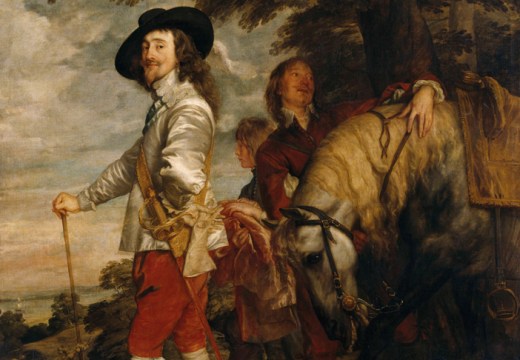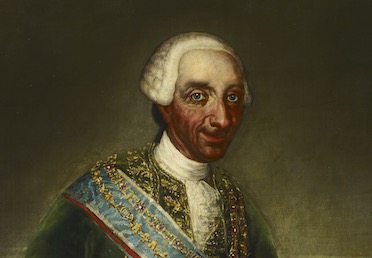Introducing Rakewell, Apollo’s wandering eye on the art world. Look out for regular posts taking a rakish perspective on art and museum stories
If ever you’ve wanted to see Oliver Cromwell’s baby clothes, now’s your chance. The Cromwell Museum, Huntingdon, an institution housed in the building where the one-time Lord Protector was educated, is now displaying a garment that Cromwell is thought to have worn in his infancy. The baby gown is among a number of eclectic Cromwell-related items that have been loaned to the museum by one of the Puritan ruler’s distant descendants: other objects include a pair of tooled gloves, a lace collar and a ‘large and elaborate’ lock believed to have secured Cromwell’s bedroom door in Hampton Court Palace following the execution of Charles I.
Curator Stuart Orme reportedly professed himself ‘gobsmacked’ on being presented with the items in question, none of which have previously been publicly displayed. ‘Back in March a lady called up asking for advice on how to conserve these items,’ he told the Hunts Post. ‘I thought they could be some letters or something but when she turned up you could hear my jaw hit the floor with a clang.’ The objects in question form the core of a new exhibit, ‘Unseen Cromwell’ – though to judge by the history of displays relating to the Roundhead leader, its organisers would be well advised to invest in some extra security.
Following the restoration of the monarchy in 1660, Cromwell’s body was disinterred and posthumously beheaded; the poor old Puritan’s head was subsequently put on public display, tottering atop a 20ft pole outside Westminster Hall as a warning to all who might defy the King. Following a storm in 1685, Cromwell’s head was knocked from its perch and eventually ended up as a ghoulish attraction at a Swiss-French collector’s private museum, subsequently passing from owner to owner. The unfortunate bonce – or something that passed for it – was only granted the dignity of a proper burial in 1960, when it was finally interred in the grounds of Sidney Sussex College, Cambridge.
More recently, a bust of Cromwell in the House of Commons tea room became the target of a rather gentle form of vandalism. As Kevin Maguire reported in January, the bust was repeatedly rotated to face the wall – an apparent (and somewhat belated) protest at Cromwell’s bloody campaigns in Ireland. Parliamentary officials got so tired of turning the bust around again that they resorted to moving it – but not before kitting it out with a ‘vibration alarm that sounds when anyone touches it’.
Got a story for Rakewell? Get in touch at rakewell@apollomag.com or via @Rakewelltweets.
Unlimited access from just $16 every 3 months
Subscribe to get unlimited and exclusive access to the top art stories, interviews and exhibition reviews.














![Masterpiece [Re]discovery 2022. Photo: Ben Fisher Photography, courtesy of Masterpiece London](http://www.apollo-magazine.com/wp-content/uploads/2022/07/MPL2022_4263.jpg)
It’s time for the government of London to return to its rightful home